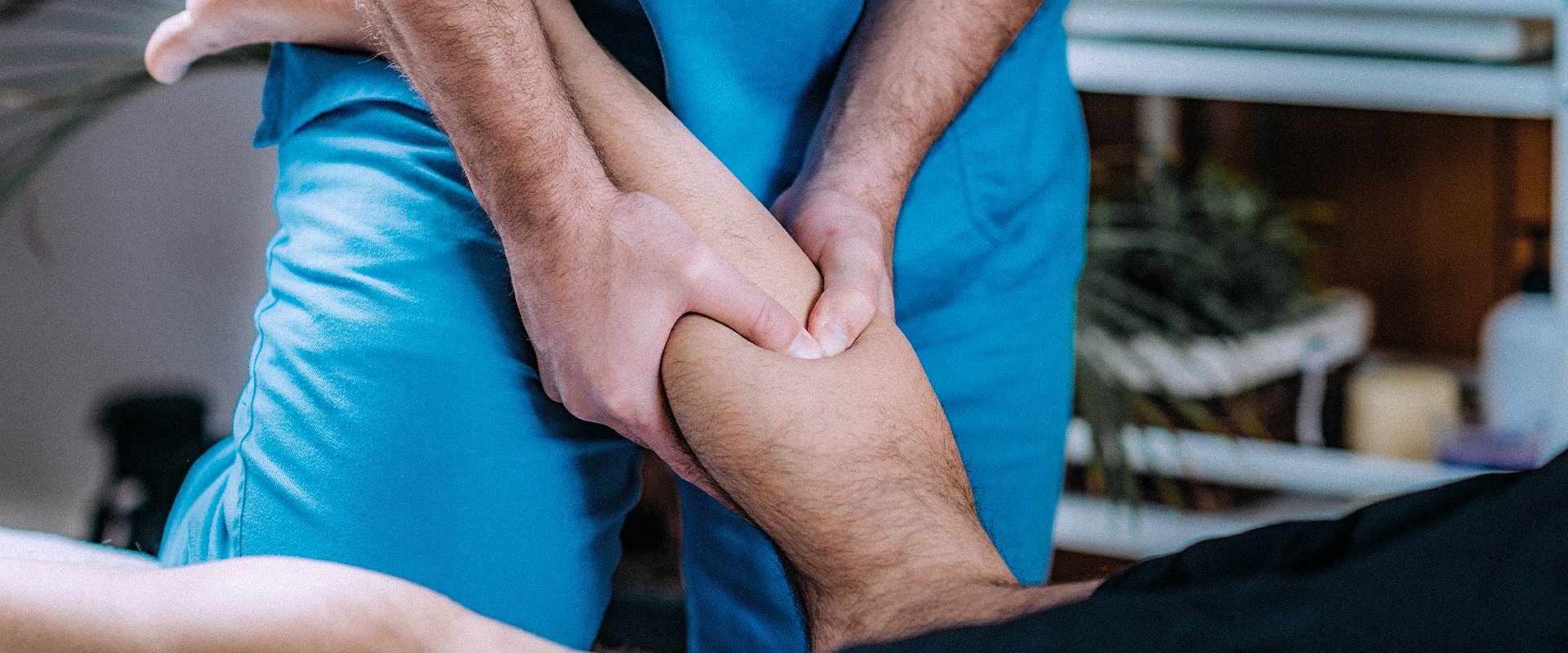
Massage Therapy
AT EVOLVE
Massage Therapy
WHAT IS MASSAGE THERAPY?
Massage therapy is the practice of using the hands or various tools to reduce general stress, pain and muscle tension. There are many different practitioners that perform massage therapy such as chiropractors, licensed massage therapists and physical therapists. How is massage therapy performed by a physical therapist different from a licensed massage therapist? There are several differences starting with the education of the practitioners.
Massage therapists must undergo training and licensing in their state whereas a physical therapist must have a graduate degree as well as a license in physical therapy. While the goals of massage are, as mentioned above, to reduce general stress, pain and muscle tension, in physical therapy, massage has a more specific purpose.
In physical therapy, the term soft tissue mobilization is often used in place of “massage,” as it better describes the practice of using tools or a therapist’s hands to assess soft tissue and then mobilize and manipulate it to restore normal function while also lessening tissue tension and pain.
WHO CAN BENEFIT FROM MASSAGE THERAPY?
If you have had a musculoskeletal or soft tissue injury or surgery and are still having pain, movement dysfunction or difficulty performing daily activities then you may have impairments or restrictions in your soft tissue or fascia. If so, you may be a good candidate for massage therapy to address these impairments, reduce pain and improve function.
HOW LONG WILL I NEED THIS MODALITY?
Massage therapy is only one tool in the therapist’s toolbox. It is used as part of a manual therapy treatment to address soft tissue injuries and impairments but it does not determine the length of your plan of care. Your physical therapy plan of care and how often or for how long you receive this type of treatment depends on many different variables. Your physical therapist will speak with you about how long and how often they plan to use this modality as this differs greatly depending on the reason you are receiving physical therapy. One of the goals of massage therapy, however, is to facilitate recovery and shorten the amount of time needed for rehabilitation.
A DEEPER LOOK INTO MASSAGE THERAPY
Massage therapy or soft tissue mobilization as it is called in physical therapy is a type of manual therapy provided by physical therapists to target impairments in soft tissues. Your therapist may use their hands to provide this type of therapy or they may use specially-designed tools. Massage therapy functions by directly affecting the tissue fibers being targeted and by modulating the nervous system activity around the area. The goals of massage therapy in physical therapy are as follows:
- Restore overall function
- Reduce pain
- Reduce or soften scar tissue
- Reorganize fibers into a more aligned position for optimal tissue function
- Reduce swelling and edema
- Lengthen muscles
End Injury Progression
Physical therapy combined with massage therapy has proven to help slow and even stop pain, related issues, and injury progression in many cases.
Relieve Pain
The movements used in this technique can target your lower back, upper back, hips, shoulders, and neck helping you to manage pain during the course of your physical therapy treatments.
Improve Range of Motion
Posture awareness is an important area to focus on due to the fact that certain positions may cause you further discomfort and pain.
Restore Mobility
You can gain mobility and flexibility by taking part in the stretches and exercises as prescribed by your physical therapist.
How Long Will Massage Therapy Treatments Last?
If you decide to work with a physical therapist to help correct your MSK issues, your entire treatment plan could consist of around 8-20+ different physical therapy and massage sessions that will each last 60-90 minutes. Once you complete your customized treatment plan, you will be able to continue to do the prescribed stretches and exercises utilized during your PT sessions yet in the comfort of your own home.
PHYSICAL THERAPY & MASSAGE
If you go to your local massage therapist you will be used to seeing options like “Swedish massage” or “ deep tissue massage” which denote the style of massage the therapist will use. As physical therapists we also have different types of massage or soft tissue mobilization each intended to achieve a certain goal or have a certain effect on the body. Here are some of the types of soft tissue mobilization provided by physical therapists:
Localized Massage Techniques: Your physical therapist may use their hands or special tools to push, pull or apply pressure to the muscles and soft tissue. They may use specialized techniques like strumming, direct oscillations, sustained pressure or unlocking spiral to achieve a reduction in tissue tension, promote blood flow and reduce pain.
IASTM: Instrument assisted soft tissue mobilization (IASTM) uses specifically constructed tools to manipulate and mobilize skin, fascia, muscles, tendons and scar tissue. Many therapists are finding that the inclusion of specialized tools improves both their assessment of underlying tissues and their treatment of targeted areas. Goals of IASTM include improving pain, healing tissues, increasing circulation and range of motion in the areas treated with this technique.
Strain Counterstrain: Strain counterstrain is a positional release technique aimed at calming spasming muscles. It is extremely gentle and by placing the spasming or tight muscles in a shortened and comfortable position can calm the spasm and allow the joints affected by that muscle to work more optimally.
Cross Friction Massage: When soft tissue like the muscles, tendons, ligaments and skin are injured, the body initially lays down new tissue fibers in a disorganized way. This can lead to scarring, pain and impaired tissue function if the tissues do not eventually align themselves in the correct orientation. Cross friction massage is a type of soft tissue mobilization wherein the therapist applies a deep, localized pressure across the direction of the disorganized or healing fibers. In doing so, the therapist promotes increased blood flow to the area which can help relieve pain and promotes tissue reorganization and remodeling.
Myofascial Release: Fascia is a thin casing of connective tissue that courses through the body and encapsulates every organ, muscle, nerve, blood vessel and fiber. When first discovered, fascia was thought to simply be a support structure for the body. Over time, however, scientists have realized that fascia plays a much more important role in the structure and function of the body including the ways in which the body moves. Inflammation and trauma can affect the fascia causing pain and impeding movement both locally and further away in the body. This type of massage aims to reduce restrictions in the fascia and promote optimal fluid dynamics to allow for sliding and gliding of these tissues as we move.
Manual lymphatic drainage: The manual lymphatic drainage technique was developed on the hypothesis that it can assist with the drainage of lymphatic fluid. This technique is often used to decrease localized swelling in a condition called lymphedema. Unlike traditional massage, this technique includes very light stroking of the skin to promote movement of the lymph fluid through the lymphatic vessels out of the congested limb and into the general circulation.
Trigger Point Therapy: A trigger point is an area of hyperactivity in a muscle. Typically involving only a small number of muscle fibers, this hypertonic area can cause localized and referred pain and interfere with the muscle’s normal function. Trigger point therapy involves applying sustained pressure directly on the trigger point. By temporarily altering the blood flow to those muscle fibers it can reset the nerve signals to the area calming the spasm.
HOW DO I KNOW MASSAGE THERAPY IS RIGHT FOR ME?
Since massage therapy is just one part of a comprehensive physical therapy treatment plan, you should discuss your interest in this technique when you meet with your therapist for the initial evaluation. At that time they can advise you on whether they feel you are a good candidate for massage and how it will fit into the larger treatment plan. If you are experiencing pain or difficulties moving, call our clinic today to learn how our physical therapists can help.
Call to Schedule a Consultation! 1-718-258-3300Mill Basin (located in Harbor Fitness)
6161 Strickland Ave
Brooklyn, NY 11234
Monday: 7am-8pm
Tuesday: 7am-8pm
Wednesday: 8am-5pm
Thursday: 7am-8pm
Friday: 8am-1pm
Park Slope (located in Harbor Fitness)
550 5th Ave.
Brooklyn, NY 11215
Monday: 9am-8pm
Tuesday: 8am-6pm
Wednesday: 9am-8pm
Thursday: 8am-6pm
Friday: 8am-3pm
Gravesend
372 Avenue U
Brooklyn, NY 11223
Monday-Thursday: 8am-8pm
Friday: 8am-3pm
Ready to take the next step to a healthier you?
Contact Us Today!
MASSSAGE THERAPY AT EVOLVE!
Interested in Massage Therapy?
Let our caring and compassionate physical therapists help you with relieving pain while getting you back on your feet comfortably.
Call now to schedule your first PT consultation free of charge.
Call: 1-718-957-2422







